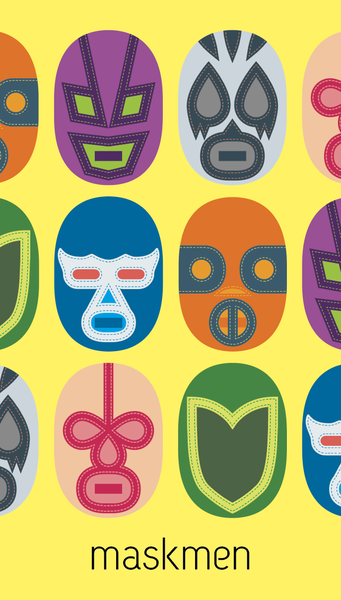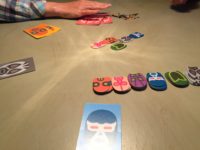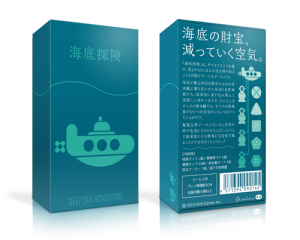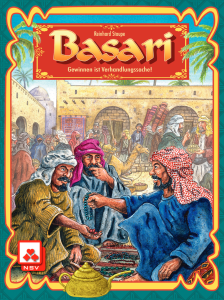- Learning time
- 20 minutes
- First play time
- 40 minutes
Maskmen
Designed by: Jun Sasaki,Taiki Shinzawa
In Maskmen your goal is to get rid of all of your cards as quickly as possible. How you do this is via the medium of Mexican wrestling.
Not actual wrestling of course (unless you have some unusual house rules) but the playing of your wrestler cards. There are six wrestlers, and at the start of each wrestling season (or round of the game) their strength relative to each other is unknown. The players will establish who is the top dog by playing cards: to start the game the opening players plays a single card. Then the player to their left must play two cards of a different colour, to show the wrestler they are introducing is stronger than the previously-played wrestler.
This must-be-stronger rule persists throughout the game, so it’s worth reiterating here.
The next player can now play three cards of a new wrestler, to show even greater strength (or pass, if they can’t). Once three cards have been played a new turn begins, and either the same wrestlers may appear or new ones might come out – possibly both. Now if someone plays a card of the lowest wrestler on the rung (wrestler A), a single card of a stronger wrestler (wrestler B) is enough to beat it, because it’s already established that wrestler B is stronger than wrestler A. There are six wrestlers in total, and the game supplies sets of wrestling masks so you can keep track of who is stronger than who – it could be a number of turns before the relative strengths are all established, because we might for instance know that both grey and green wrestlers are stronger than purple wrestler, but not who would win in a fight between them until the relative cards establish one as the stronger.
The first person to be rid of their cards in a season gets two points, the second one point. The last one out gets hit with a -1pt penalty. After four seasons – you might easily score zero! – the most points wins.
Joe says
Another highly original offering from Oink Games. That the cards played each round establish the hierarchy that allows subsequent cards to be played is a very interesting idea, which takes some getting used to. Once you've assimilated it, it makes sense and fits with the theme of a Mexican wrestling season surprisingly well. The jury's out on how much strategy there is to be deployed - after a couple of plays I'd put it somewhere near a game like Fuji Flush, where you might have some influence if you've been dealt good cards, but a bad hand will leave you at the mercy of the other players. That said we've played with four and five so far, and it may be more strategic with two or three. In any case, it's entertaining and fun so the randomness doesn't really bother me.
The guru's verdict
-
Take That!
Take That!
There's no arbitrary targeting of anyone - the direct combat is kind abstracted, and between wrestlers rather than players.
-
Fidget Factor!
Fidget Factor!
There can be the odd lull, especially when the game is new.
-
Brain Burn!
Brain Burn!
The rules are simple but they're not the most intuitive. The fact the cards are wrestlers is pretty much irrelevant: it could be anything at all, as the goal is to be shot of your cards. In that respect it's about managing what you're dealt and not ending the round with lowly-rated wrestlers you can't get rid of.
-
Again Again!
Again Again!
A first play can feel pretty random (and we'd argue there's less control with 5-6 than 3-4) but repeat visits will start to bring the game into focus.












Sam says
I have a real soft spot for Oink games which always come in delightful little packages. This one, despite being the toughest I've encountered so far in terms of accessibility (the English rules were a little unclear), is a real oddball package. It's too opaque to feel like a family game and too light (and random) to feel like one for the strategists. But it's definitely unique, and we enjoy it.